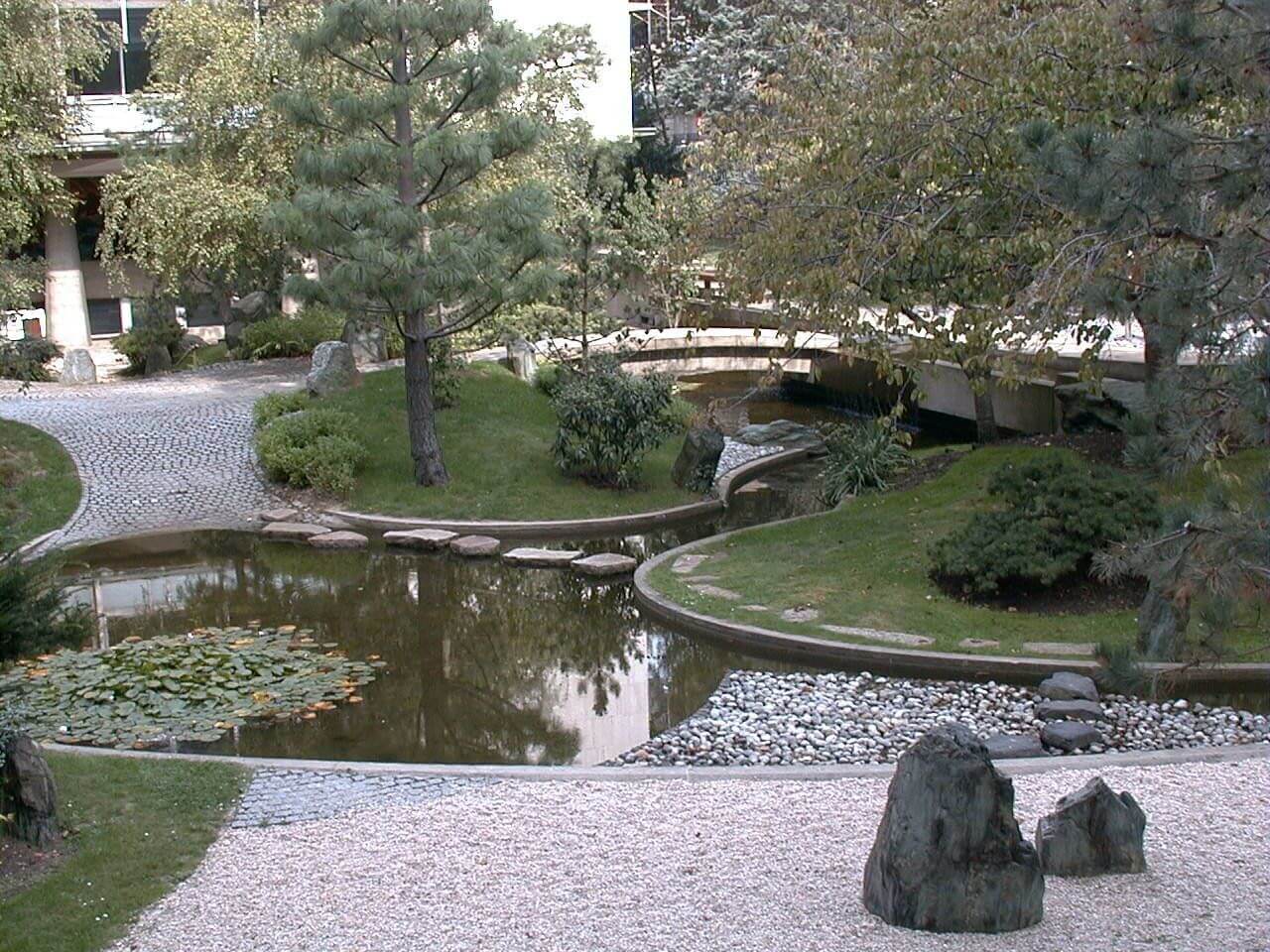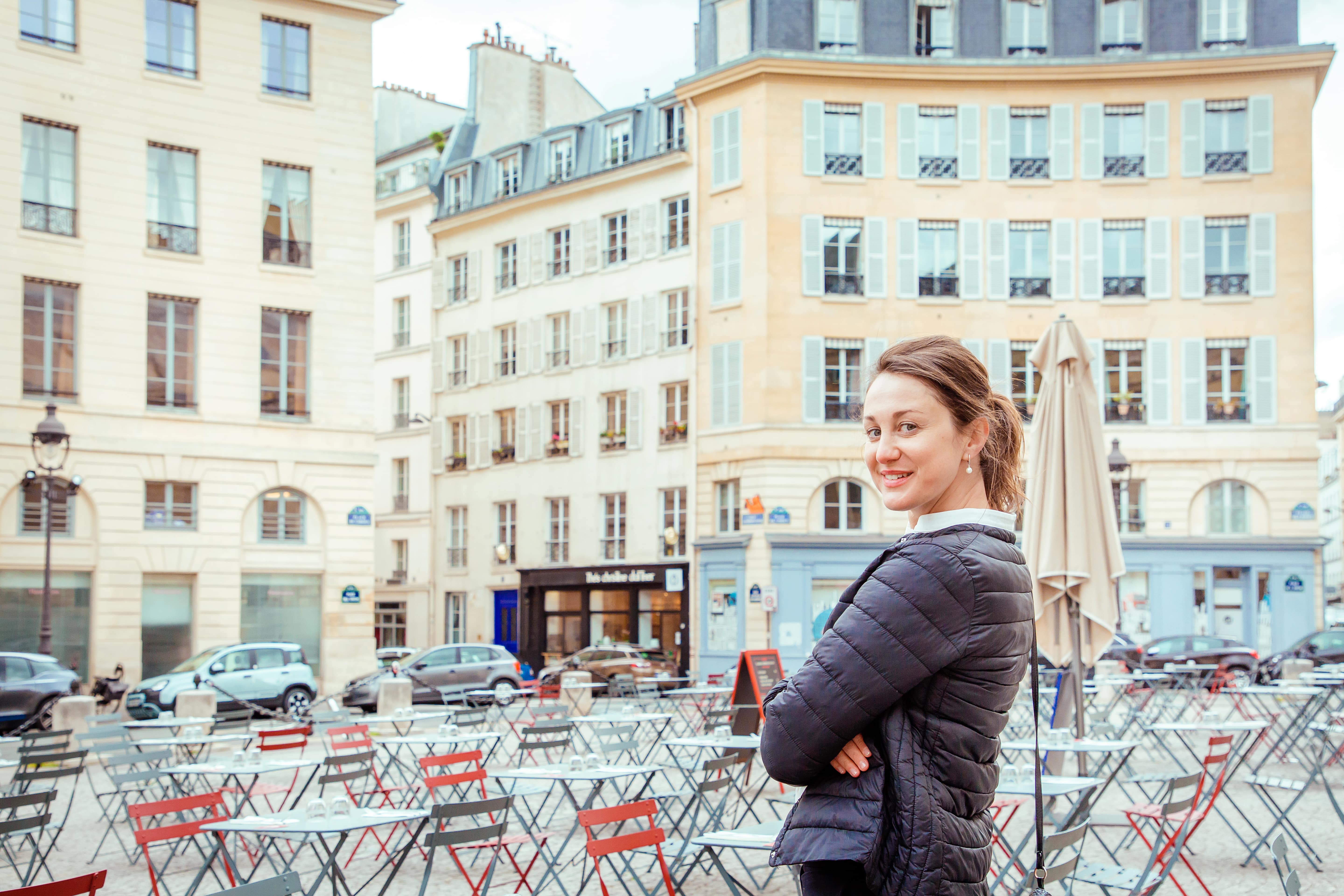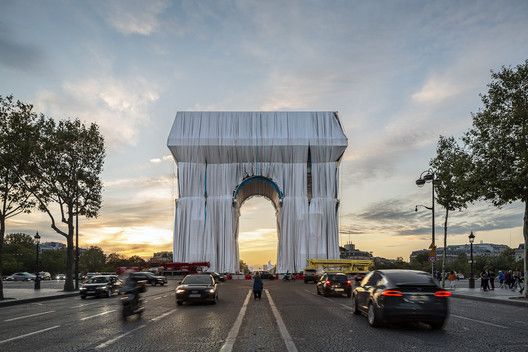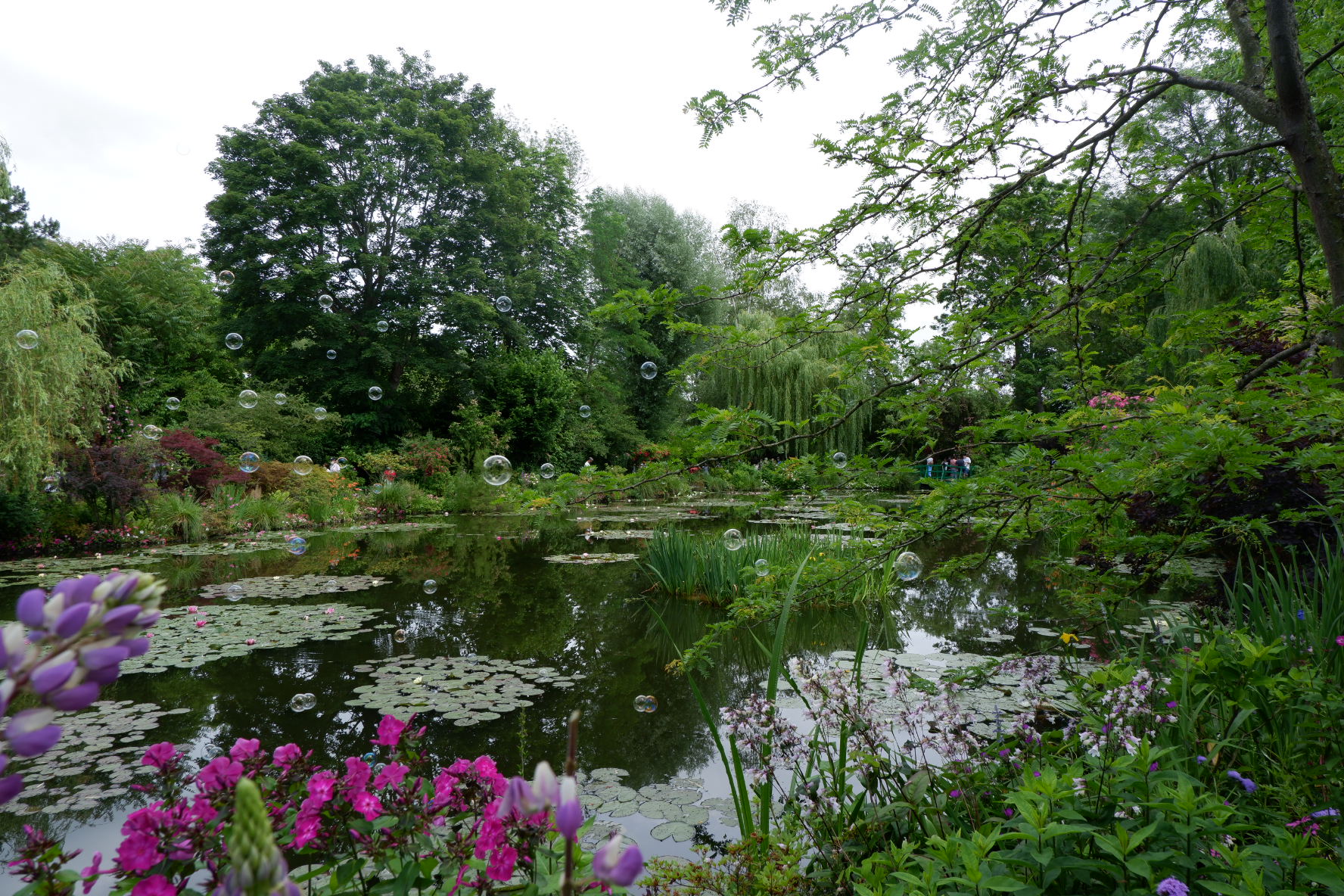L’Art de vivre
à la française
à la française
L’Art de vivre
à la française
The hidden gems of Paris

Give me the time
-the supreme luxury-
to live at my own pace,
to contemplate, to take the ways
that neither maps nor plans embrace
André Hardellet
I’m going to walk now at my own pace in search of a quiet charming place in the heart of Paris, and I invite you with me, my dear visitor.
This magic city is gifted as everything with its dual nature. In the ancient Chinese philosophy it is Yang, - active, passionate, chaotic, and constantly growing, and Yin, - shadowy, sheltering, calm, and meditative. The two parts come together to complete the wholeness and create uniqueness. With time the beautiful deserted refuge becomes harder and harder to find in such a dynamic city as Paris, but still, everything is within the power of a curious adventurer!
Today I look for the shelter, for the moment of contemplation and beauty in the Japanese Gardens and islands of Paris.
It happens sometimes that we become tired and overwhelmed with the monumental part of the city. We want to escape from the crowd in search of a quiet charming place, the hidden gem, little known, and rarely visited by the mainstreamed tours.
So, where to go in search of it? And is it possible to find in one of the most visited cities of the world? The answer is – yes.
More than 3000 hectares of green space, 600000 trees, 400 parks, gardens, and promenades, including, the decorative gardens, two huge forests that cover 1700 hectares. Yes, we talk about Paris. The city is full of green spaces where to escape from big city life and its accelerated rhythms. Each of those spots has its own character and charm. Besides every year a new garden or two appears in the city. Which is a great joy for the ecologists of today. Anyway, let me be more specific, my dear visitor. So here we're:
The Japanese garden de Noguchi in UNESCO.
Where to find: Unesco, 7 place de Fontenoy, the 7tharrendissement.
The garden Noguchi is named after his creator, the Japanese artist Isamu Noguchi. It is located at the foot of UNESCO buildings and occupies 1,700 square meters of land. The cherry trees, plum trees, magnolias, the bamboos you’ll find there were imported from Japan by specialized gardeners. The 80 tons of stones were chosen by the artist himself for the beauty of its forms, as well as several watercourses were successfully integrated into this creation of nature’s harmony and serenity.
"The Fountain of Peace" completes the composition. This sculpture is made of gray granite rock, where the artist has incised the word "Peace" in japanese characters, so important a word for UNESCO. In other words it is the perfect place to restore the energy and find some peace and calm contemplating the beauty created by man and nature.
Next is the Japanese garden of the museum of Guimet.
Where to find: 19, avenue d’Iena, 16th arrondissement
The first building you’ll see will be the magnificent museum of Guimet - the mecca of Buddhism in Paris. The extraordinary masterpieces telling us about its history in Japan and China are put on display here. This calm and pleasant place offers the beautiful Japanese garden. It was recently renovated so today you could enjoy the charming tea ceremonies in one of its pavilions. It is the place where apart from tea you can taste the calm and joy, to sit and meditate, listening to the running water in the middle of the vegetation. I’ve spent the whole day in the museum the first time I went there. So remember to visit it too. It is really worth it!
Don’t miss the islands!
How many islands do you think are there in Paris? More than two, that’s for sure. Today I’ll mention two of them, which are, to my mind, in our best interest this time.
The island of Saint- Louis.
Certainly, it is difficult to find it completely deserted, any way try your luck on Sunday morning. The island of Saint Louis is an excellent place for the promenade. Here what I do when I’m there: first on the list is to eat the best ever ice cream at Berthillon, then to make a small tour a La Charlotte de l’isle to enjoy delicious homemade cooking (yes, I’m a real gourmet!) and in the afternoon to dine in the Isami – the excellent Japanese restaurant or a pique-nique on the Quai d’Orleans enjoying the so charming ambience and views of the island. Believe it or not but this place in a far past, served as a prairie for the cows!
The other nice place I want to tell about is Île des Cygnes or Île Maquerelle.
This relatively quiet artificial island on the river Seine has an advantage of being often infrequent by the tourists who do not know Paris well. It stretches nine hundred meters long between the Bir-Hakeim bridge and that of Grenelle. The island houses the Statue of Liberty the mini twin sister of the famous one in New York. It offers the green weeping willows, impressing ash trees and poplars invested by colonies of swans. So don’t forget the photo camera with you!
And this is just the beginning of our Parisian calm spaces discovery.
Next time we will talk about churches and graveyards.
Nothing scary, only calm and charm !
La versione in Italiano.
I tesori nascosti di Parigi
Dammi il tempo,
quel lusso supremo
di vivere al mio ritmo,
di poter contemplare, prendere la strada
che nessuna mappa o piano indica
André Hardellet
Ora camminerò pian-piano alla ricerca dei luoghi di calma e fascino nel cuore di Parigi e ti invito di andare con me, il mio caro visitatore. Senza far corsa, senza vanità inutile, godendo ogni nostro passo.
Questa città magica è dotata come tutto dalla sua duplice natura. Mi viene in mente la filosofia asiatica che parla dello Yang - attivo, passionale, caotico e in costante crescita, e lo yin, - oscuro, calmo e meditativo. Due parti si uniscono per completare l’entità e creare l’unicità. Con il passare del tempo i bellissimi rifugi diventano ancora più difficili a trovare a Parigi, eppure tutto è sotto il potere di un curioso avventuriero!
Questa volta cercheremo un rifugio, quel momento di contemplazione e di bellezza, nei giardini giapponesi e nelle isole di Parigi. Prima o poi possiamo stancarci dalla parte emblematica e monumentale della città, avendo la voglia di fuggire dalla folla per far una pausa, mangiar un panino con calma e gusto.
Quindi, dove andare alla ricerca di pace a Parigi? È possibile a trovarlo nella città una dei più visitate del mondo? La risposta è – si!
Più di 3000 ettari di spazio verde, 600000 alberi, oltre 400 parchi, giardini e passeggiate, compresi i giardini decorativi, due enormi foreste che coprono 1700 ettari. Sì, ora parlo di Parigi. La città è piena dei spazi verdi dove si possa scappare dalla vita a volte troppo caotica del capitale. Ognuno di quei posti ha il suo carattere e il suo fascino. Inoltre ogni anno, uno o due nuovi giardini appaiono in città, - Il fatto molto apprezziato dai ecologisti.
Questa volta ti derigo, il mio caro visitatore, nel giardino giapponese de Noguchi nell'UNESCO.
Ecco dove si trova: Unesco, 7 place de Fontenoy, il 7 arrondissement
Il giardino Noguchi ha avuto il nome dal suo creatore, l'artista giapponese Isamu Noguchi. Si trova ai piedi degli edifici di UNESCO e occupa 1.700 metri quadrati di terreno. Offre un paradiso di pace e gioia nel cuore di Parigi. Con un ruscello, un lago, un ponte, gli arbusti e gli alberi questo giardino incarna la creazione molto rigorosa. Le Ciliege di Japone, magnolie, bambù sono stati importati direttamente dal Giappone dai specialisti. Le 80 tonnellate di pietre scelte dall'artista stesso per la bellezza delle sue forme, dove ogni ruscello d'acqua ha il suo posto giusto ed è si intergra armoniosamente in questo bellissimo quadro estetico.
"La fontana della pace" completa questa composizione. La scultura è fatta di una roccia di granito grigio in cui l'artista ha inciso la parola "Pace", in caratteri giapponesi. La parola così importante e simbolica per UNESCO.
Il giardino giapponese del museo di Guimet.
Dove trovarlo: 19, avenue d'Iena, 16 arrondissement
Il magnifico museo di Guimet è la mecca del Buddismo. A sua volta propone i capolavori religiosi che ci raccontano la storia del buddismo in Giappone e Cina. Questo luogo calmo e piacevole offre ai suoi visitatori un bellissimo giardino giapponese. È stato recentemente rinnovato e con il suo nuovo padiglione offre anche le cerimonie del tè. Ci permette d’assaporare anche la calma e meditazione, ascoltando l'acqua corrente nel mezzo della vegetazione. Ho trascorso l'intera giornata al museo la prima volta che ci sono andata.
Ricorda di lasciare tempo anche per quello, ne vale sicuramente la pena!
Le isole da non perdere!
Quante isole pensi ci siano a Parigi? Più di due, questo è di sicuro. Ma questa volta ne visiteremo due, che secondo me sono più tranquilli dei altri.
L'isola di Saint-Louis. Certamente, è difficile a trovarla completamente desserta, comunque puoi tentare la fortuna domenica mattina. L'isola di Saint Louis è un luogo speciale per la passeggiata.
Ecco l'idea di una visita giornaliera che amo fare quando sono lì: mangio un buon gelato a Berthillon, poi faccio uno piccolo tour a la Charlotte de l’Isle per le dlizie fatte in casa (e si, sono golosona!) e nel pomeriggio ceno nell'Isami, l'eccellente ristorante giapponese oppure per amatori della romantica e la natura si possa fare il pique-nique sul Quai d'Orleans. Che ci crediate o no, ma in un lontano passato, questo luogo era una prateria per le mucche!
L'altra è l’isola aux Cygnes.
Quest'isola relativamente tranquilla ha il vantaggio di essere poco conosciuta da un solito turista. Si estende per novecento metri tra il ponte Bir-Hakeim e quello di Grenelle. L’isola ospita la statua della Libertà, la mini sorella gemella di quella famosa in New York. Per il piacere estetico l'isola offre i salici piangenti, frassini e pioppi investiti da colonie di uccelli. Quindi non dimenticare la fotocamera con se!
Tutto questo è solo l'inizio della nostra scoperta dei spazi calmi e “charmante” a Parigi.
La prossima volta parleremo delle chiese e cimiteri. Niente paura, solo la calma e
il fascino che ci aspetta!
- Tags:
- hidden gems of Paris






